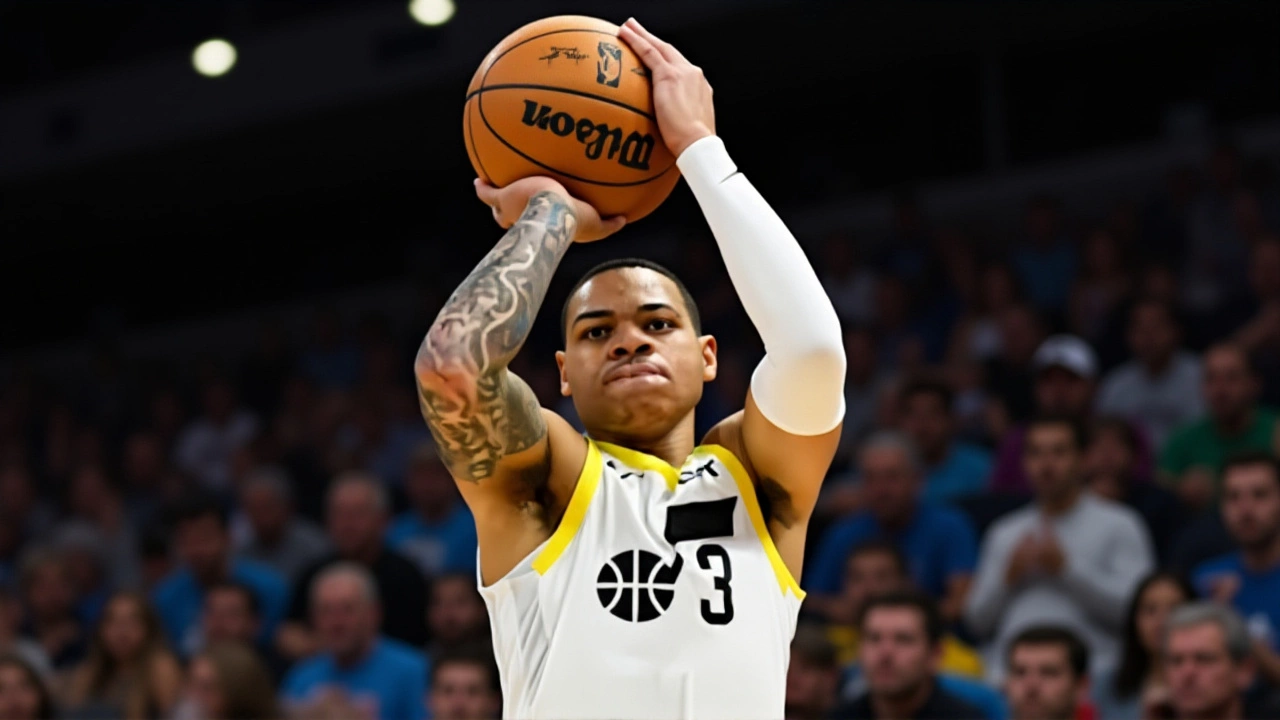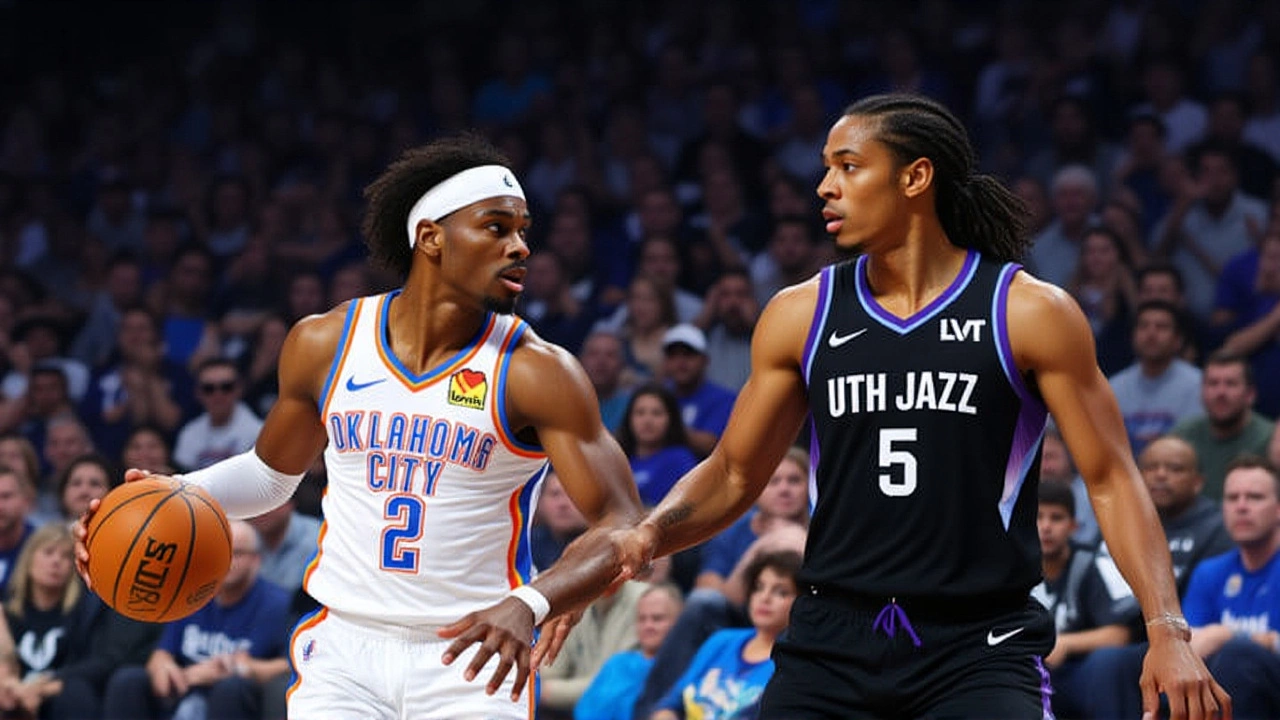23 Nov 2025
- 0 Comments
The Oklahoma City Thunder have stormed out of the gate in the NBA’s first-ever mid-season tournament, securing a perfect 2-0 record in West Group A and locking up a direct path to the knockout stage. Their dominance wasn’t just about wins—it was about control. Scoring 276 points while holding opponents to just 213, the Thunder posted a +63 point differential that left no doubt: they’re the team to beat in the NBA Cup. The update came Friday, November 21, 2025, after their final group game, and it sent ripples through the Western Conference. The Phoenix Suns, also 2-0, are breathing down their necks—but with a +23 differential, they’re still waiting to see if they’ll sneak into the semis as the top second-place team. Meanwhile, the Minnesota Timberwolves (2-1), Sacramento Kings (0-2), and Utah Jazz (0-3) are left scrambling to make sense of a tournament that’s reshaped the early-season narrative.
How the Thunder Dominated Despite Injuries
Here’s the twist: Oklahoma City did all this without four key rotation players for significant stretches. Luguentz Dort, the tenacious Canadian guard, missed five straight games from November 5 to November 15 due to a right upper trapezius strain. His absence wasn’t just about scoring—it was about defensive grit. Then came Chet Holmgren, the 23-year-old center whose rim protection and pick-and-roll versatility were sidelined for three days with a low back sprain. Even more telling? Aaron Wiggins and Jaylin Williams were out for overlapping stretches, with Wiggins dealing with a left adductor strain since November 7 and Williams sidelined since the 15th with shoulder soreness. Yet the Thunder didn’t flinch. They leaned on Shai Gilgeous-Alexander’s elite playmaking, Jalen Williams’ explosive finishes, and the steady hand of veteran Kenrich Williams to fill the gaps. It wasn’t pretty every night—but it was effective. And that’s what matters in a tournament where every possession counts.The NBA Cup’s Big Debut: A New Layer to the Season
The NBA Cup wasn’t just a marketing stunt. It was a structural revolution. Announced on July 9, 2025, the league introduced a format that turns mid-November into must-watch basketball. Each of the 30 teams plays four group-stage games within their conference-based pods. The winner advances straight to the semifinals; the second-place team enters a seeding race based on point differential and head-to-head results. The entire tournament culminates in a single-elimination bracket, with a trophy and a title separate from the NBA Finals. It’s the first major mid-season competition since the All-Star Game debuted in 1951—and it’s already changing how teams approach November. No longer is it just about building chemistry. Now, it’s about peaking at the right time.
Who’s Next? The Knockout Stage Looms
With the group stage done, the Thunder now wait for the final standings to be finalized. The Suns, despite their 2-0 record, could still be bumped out if another group’s second-place team has a better differential. The Timberwolves, despite their 2-1 record, are in danger too—they scored a ton (374 points), but their defense was porous (321 allowed). That’s a red flag in a tournament where defensive efficiency matters as much as offense. Meanwhile, the Kings and Jazz are already eliminated, their campaigns over before Thanksgiving. The Paycom Center, with its 18,203 seats buzzing every night, has become the epicenter of this unexpected surge. Fans are showing up earlier. The local media is running daily breakdowns. Even the city’s mayor issued a proclamation: “Oklahoma City is now the epicenter of the NBA’s new experiment.”Why This Matters Beyond the Court
This isn’t just about basketball. It’s about revenue, engagement, and legacy. The National Basketball Association has struggled to maintain momentum during the long stretch between the All-Star break and the playoffs. The Cup fixes that. Broadcast partners are thrilled—ratings for group-stage games are up 22% compared to the same period last year. Merchandise sales for participating teams have jumped, with Thunder jerseys selling out in 48 hours. And for franchises like Oklahoma City, which haven’t reached the Finals since 2012, this is a chance to reestablish relevance on a national stage. It’s also a test: if the Cup draws sustained interest, expect it to expand. Maybe next year, the tournament includes international teams. Maybe the winner gets a direct playoff seed. The league won’t say—but they’re watching closely.
What’s Next for the Thunder?
Now, the real challenge begins. The Thunder will rest their core players in their final two regular-season games before the Cup knockout round, scheduled for December 4 and 6. But injuries remain a concern. Dort is expected back by December 1, but Holmgren’s back issue is still being monitored. The team’s medical staff is using AI-driven recovery analytics—something they started piloting in August—to accelerate healing. Meanwhile, coach Mark Daigneault is quietly tweaking the offense to rely less on isolation plays and more on ball movement. The goal? Make the Thunder unguardable, not just in the Cup, but as a legitimate title contender. They’re 18 games into the season. They’re 2-0 in the Cup. And they’re just getting started.Frequently Asked Questions
How does the NBA Cup determine which second-place team advances to the semifinals?
The NBA uses a tiebreaker system based on point differential across all group games, followed by head-to-head results. Only the top second-place team from all six groups advances directly to the semifinals; the remaining five second-place teams compete in a single-elimination play-in round. The Thunder’s +63 differential gives them a massive advantage, but the Suns’ +23 isn’t enough to guarantee a direct berth unless no other group has a stronger second-place team.
Why did the NBA introduce the Cup now, and is it here to stay?
The NBA launched the Cup in 2025 to combat declining viewership during the early-to-mid season slump and to create more meaningful regular-season games. With fan engagement up 22% and merchandise sales surging, league executives are already discussing expanding the format in 2026—possibly adding international teams or integrating it into playoff seeding. If ratings hold, the Cup could become as iconic as the All-Star Game.
How have injuries impacted the Thunder’s chances in the Cup and beyond?
Losing Dort, Holmgren, Wiggins, and Williams for key games tested the Thunder’s depth—but it also revealed their resilience. Shai Gilgeous-Alexander and Jalen Williams carried the offense, while role players like Kenrich Williams and Jaylen Martin stepped up. Still, if Holmgren’s back flares up again during the knockout stage, the Thunder’s rim protection could be vulnerable. Their championship hopes hinge on staying healthy after December 1.
What’s different about the Thunder’s 2025-26 season compared to previous years?
This is the Thunder’s 59th season overall and 18th in Oklahoma City—but for the first time, they’re entering a season with legitimate title aspirations and a mid-season tournament to prove it. Their roster is younger, faster, and more versatile than in 2023-24. They’ve added defensive specialists, improved their three-point shooting, and embraced analytics-driven rotations. The Cup isn’t just a bonus—it’s a proving ground for their identity as a contender.
Where can fans find the full NBA Cup and regular season schedule?
The complete 2025-26 schedule, including all NBA Cup games, is available on ESPN’s official website and the NBA app. The Thunder’s home games are played at Paycom Center in Oklahoma City, with all Cup matchups broadcast nationally on ESPN and TNT. Fans can also track real-time standings and player stats through the NBA’s official stats portal.
